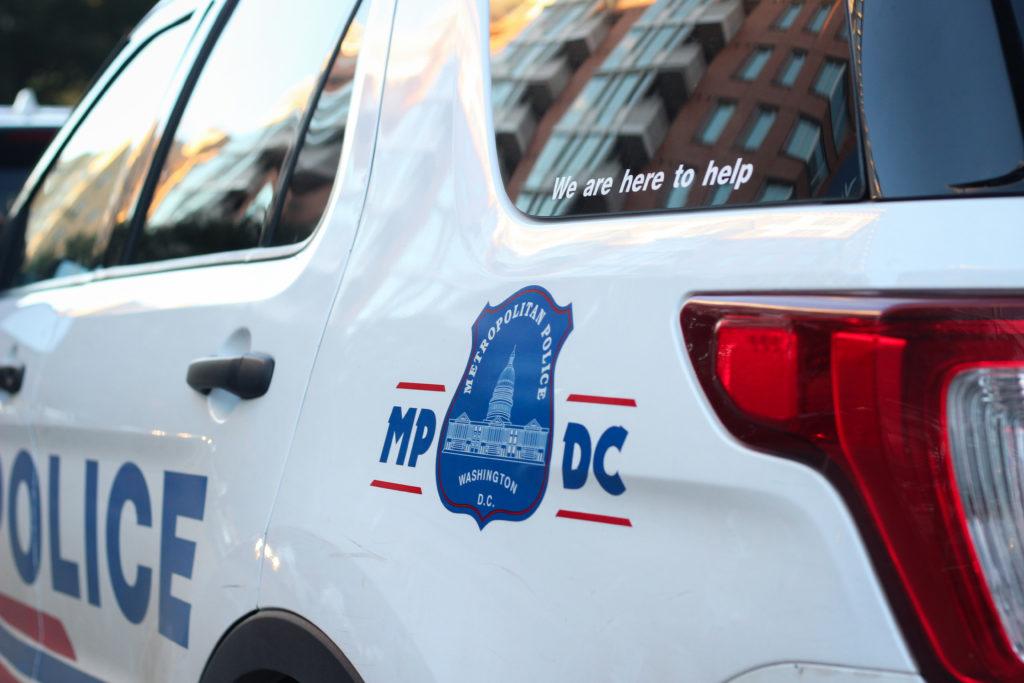While the use of police force has surged in the District over the past year, the Second Police District – which encompasses Foggy Bottom – has consistently had the fewest number of incidents, according to a report released by the D.C. Office of Police Complaints last week.
In 2018, the District recorded about 1,200 incidents of police force, or “physical coercion used to effect, influence or persuade an individual to comply with an order from a police officer,” according to the report. The Second District accounted for about 6 percent of those incidents – the lowest proportion across all of D.C. – which experts said is likely the result of the relatively wealthy population of the area.
The first and fourth police districts, which border the Second District, accounted for the second-fewest number of incidents across D.C. Police use of force increased about 20 percent between 2017 and 2018 District-wide, with the fifth and seventh districts in Southeast D.C. consistently accounting for the largest percentages of police use of force, according to the report.
The Second District has recorded the lowest percentages of police force D.C.-wide annually since at least 2015, according to the report.
Metropolitan Police Department spokeswoman Alaina Gertz said police use of force includes both “low-level physical tactics,” like control holds, and the “more serious” use of weaponry like batons, tasers or firearms.
Gertz said MPD officers are most likely to use force during arrests, and officers typically use the lowest level of force possible. Nearly 90 percent of incidents involving force involved takedowns or control holds, she said.
Gertz said MPD will address the overall increase in incidents involving force by providing officers with “training, tools and support necessary to limit the use of force and de-escalate situations whenever possible.”
“We will also continue to ensure use of force incidents are investigated thoroughly and impartially and that we analyze emerging trends regarding use of force,” Gertz said.
Criminal justice experts said the relatively low frequency of police use of force incidents in the Second District could be linked to the area’s socioeconomic makeup. Ward 2, which includes the Second District, is among D.C.’s most affluent wards, while Wards 7 and 8, which include the sixth and seventh police districts, have the highest poverty rates in D.C.
Frederick Shenkman, an emeritus professor of criminology at the University of Florida, said discrepancies in socioeconomic status between neighborhoods can contribute to differences in uses of force between different areas in cities. He said wealthier individuals view police as a group that serves them, while poorer residents sometimes “see themselves as people who are victims of police violence.”
Shenkman said police departments can address increases in use of force by upping community policing techniques, like town meetings and public service announcements, to reduce tense encounters between community members and police officers.
“I’m a really strong believer in community policing, that police are part of the community,” he said.
Michael DeValve, an associate professor of criminal justice at Fayetteville State University in North Carolina, said discrepancies in uses of force between police districts are the result of differing perceptions of safety across a city’s neighborhoods.
“The discrepancies in use of force in neighborhoods tend to be about the perception about safety,” DeValve said. “In other words, officers who feel safe won’t necessarily resort to force more readily.”
He said younger, “inexperienced” officers are more likely to use force “more readily.” The median age of officers in the Second District is 42, which is the oldest citywide, according to the report.
Robert Jackall, an emeritus professor of criminology at Williams College, said an increase in use of force by police officers creates a lack of trust between the community and members of law enforcement because police are more likely to be viewed as threatening.
“The more force that police use, the less they are trusted by communities,” Jackall said. “And the less they are trusted by communities means an increase in aggressive behavior toward the police, which then leads to increased use of force when people don’t comply.”





